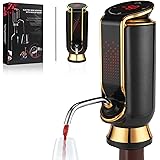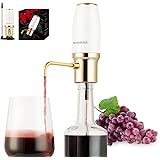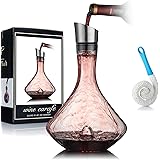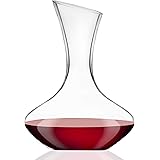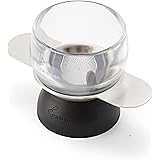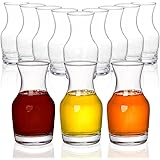Mastering Wine Etiquette: Essential Tips for Beginners and Enthusiasts
Are you navigating the rich world of wine, seeking confidence in every pour and toast? The journey into wine appreciation often begins with understanding basic protocols. The video above, presented by B. Pierre Asti, offers invaluable wine etiquette tips for beginners. These guidelines are designed to enhance your enjoyment and comfort in any wine-related setting.
Understanding these fundamental practices is truly beneficial. It ensures that wine’s inherent pleasures are not diminished by social uncertainty. This guide expands upon the foundational tips provided in the video, offering deeper insights and context.
Proper Glass Handling: A Foundational Etiquette Tip
Hold the Stem, Not the Bowl
Holding a wine glass by its stem is considered the first rule of wine etiquette. This practice is not merely about appearance. It significantly impacts the wine’s temperature.
Warm hands transfer heat quickly to the wine. Consequently, delicate aromas and flavors may be lost. Studies indicate that even a slight temperature increase alters a wine’s profile. White wines, particularly, are highly sensitive to warmth.
Furthermore, holding the stem prevents unsightly fingerprints. These can detract from the wine’s visual appeal. The pristine clarity of the glass is preserved, allowing full appreciation of the wine’s color.
Pouring Protocol: Serving Others First
When serving wine, others should be served before yourself. This gesture is a sign of respect and hospitality. It is a fundamental principle in many social contexts.
This tradition fosters a welcoming environment. It ensures guests feel valued and attended to. Such a practice underscores the host’s thoughtfulness.
The Art of Wine Tasting: The Five S’s
The gentle swirling of wine in a glass is a critical step. This action releases complex aromas and flavors. It allows the wine to ‘open up’ more fully.
A more realistic assessment of the wine’s character is thereby provided. This technique is part of a broader framework: the Five S’s of wine tasting. These steps include See, Swirl, Sniff, Sip, and Savor.
See: Visual Assessment
Observing the wine’s appearance is the initial step. This involves checking for clarity and color. Any suspended particles or cork fragments are identified.
The color itself offers clues about the wine’s age and varietal. For instance, deeper reds often suggest maturity. Lighter hues may indicate youth.
Swirl: Releasing Aromas
As mentioned, swirling aerates the wine. This process increases the surface area exposed to air. Volatile aromatic compounds are consequently released.
A wine’s true fragrance profile is then revealed. This action is essential for the next step, sniffing.
Sniff: Detecting Flaws and Notes
The aroma evaluation checks for two primary aspects. First, potential flaws or off-notes are sought. These could indicate spoilage or cork taint.
Second, specific aromatic descriptors are identified. These include fruit, vegetable, herb, or spice notes. A study found that olfaction accounts for up to 80% of perceived taste.
Sip: Palate Evaluation
A small sip allows for palate assessment. Sweetness levels are determined. Fruitiness is evaluated, as is the wine’s body (light or full).
The presence and intensity of tannins are also noted. Tannins contribute to a wine’s structure and mouthfeel. Their balance is crucial for enjoyment.
Savor: The Lingering Impression
The final S involves savoring the wine’s finish. This is the lingering impression left on the palate. Its length and pleasantness are evaluated.
This step offers an overall perception of the wine’s quality. It completes the sensory journey of tasting.
Sensory Considerations: Perfume and Wine
Wearing strong perfumes or colognes should be avoided during wine tastings. These fragrances can significantly interfere with the wine’s aromas. They create a distracting olfactory environment.
The subtle nuances of a wine can be easily overshadowed. This diminishes the tasting experience for all participants. Consideration for others’ sensory perception is paramount.
Toasting Etiquette: Clinking and Eye Contact
Proper toasting involves specific courtesies. Eye contact should be made with each person when clinking glasses. This communicates respect and shared celebration.
Furthermore, sipping should wait until after the toast is given. Typically, the person leading the toast takes their first sip. Only then should others follow suit, marking a collective acknowledgment.
Seeking Expert Advice: Consulting the Sommelier
When dining out, do not hesitate to ask a sommelier or server for wine recommendations. They are trained professionals with extensive wine knowledge. Their expertise is invaluable for ideal pairings.
A simple inquiry, such as “Which wine pairs well with the sea bass?”, can yield excellent results. Their suggestions often enhance the dining experience considerably. Sommeliers are dedicated to improving guest satisfaction.
Strategic Wine Tasting Order: From Light to Heavy
At a wine tasting, a logical progression is advised. Lighter wines should be tasted before heavier ones. This prevents delicate flavors from being overwhelmed.
White wines are typically tasted prior to red wines. This order applies whether sampling a single varietal or a diverse selection. Following this structure ensures a clear palate for each wine evaluated.
The palate’s sensitivity can be impacted by strong flavors. Hence, a gradual introduction is ideal. This allows full appreciation of each wine’s distinct characteristics.
Embracing Inquiry: Asking Questions at Tastings
Never be timid about asking questions at vineyards or wine tastings. The staff and winemakers possess deep knowledge. They are often eager to share their passion.
Inquiries about the wine or winemaking process are always welcomed. This interaction enriches your understanding. It allows for a deeper connection with the product and its origin.
Many establishments encourage visitor engagement. Industry surveys indicate that visitor education significantly boosts brand loyalty. This open dialogue truly enhances the overall experience.
The Practicality of Spit Buckets
When hosting a wine tasting, providing spit buckets is a thoughtful gesture. These are also known as dump buckets. They allow guests to taste many wines without excessive consumption.
A spit bucket can be any discreet vessel, from extra glasses to pitchers or even flowerpots. Its purpose is to facilitate responsible tasting. Prior communication about their availability and location is crucial.
This practice is especially common in professional settings. Wine judges, for instance, utilize spit buckets extensively. It allows for accurate, unbiased assessment of numerous samples.
Responsible Enjoyment: Knowing Your Limits
The final and most crucial wine etiquette tip is to know your limits. Drinking responsibly is paramount. This ensures safety and a positive experience for everyone.
If hosting a tasting, this message must be clearly communicated. Guests should be encouraged to drink in moderation. This proactive approach underscores a commitment to well-being.
Adhering to these wine etiquette tips contributes to a more sophisticated experience. These guidelines help every beginner wine enthusiast navigate the world of wine with confidence.


